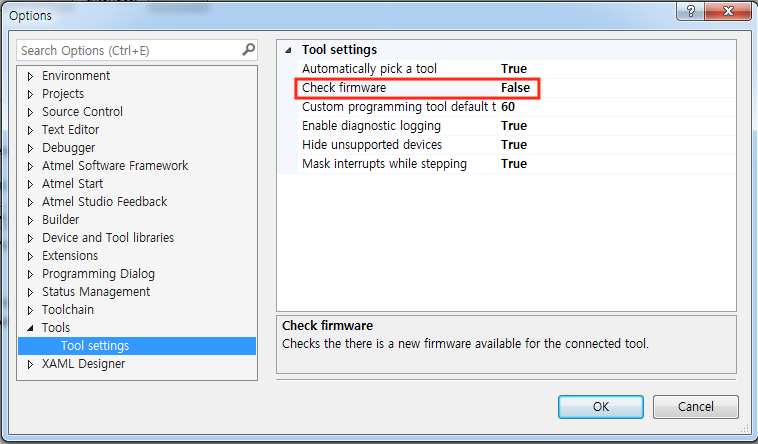

- STM32 DRIVER FOR WINDOWS 10 HOW TO
- STM32 DRIVER FOR WINDOWS 10 INSTALL
- STM32 DRIVER FOR WINDOWS 10 DRIVERS
- STM32 DRIVER FOR WINDOWS 10 UPDATE
- STM32 DRIVER FOR WINDOWS 10 MANUAL
STM32 DRIVER FOR WINDOWS 10 DRIVERS
Ignore option allows users to ignore the determination of a device in the future or just ignore a driver for the device.īesides, users can also back up the drivers in order to roll back to the previous version in the future if it’s necessary. To meet users’ different needs on driver update, Driver Booster provides more customized options for different users to configure their device drivers. Some Highlights You Might Be Interested in Driver Booster: Just a few minutes later, your drivers will be updated completely without any other operations.

STM32 DRIVER FOR WINDOWS 10 INSTALL
Simply click “Update Now” to download and install drivers automatically from the vendors. Step 1 Click download button below to download and install Driver Booster on your Windows in few seconds and then launch Driver Booster.ĭriver Booster will scan the outdated, missing and faulty drivers and give an outdated driver list. Driver Booster is a useful and powerful driver updater to help users to scan outdated, missing and faulty drivers and offers the latest and best-matched drivers to download and install directly from the vendors. For example, to combat Meltdown and Spectre flaws, Nvidia updated graphics drivers to defend Spectre CPU attacks. What’s worse, when a security bug has been exploited by hackers, anyone has a risk to be attacked because of not updating security patches rolled out by driver or OS vendors. Step 6 Windows will determine the driver software for your devices.įor many computer users, it’s really a hard time to find the best-matched drivers for their devices. Step 5 Browse the driver and click “Next” to continue. Step 4 Click “Browse my computer for driver software” to locate and install driver software manually.
STM32 DRIVER FOR WINDOWS 10 UPDATE
Step 3 Double-click on “Sound, video and game controllers” to expand the list of the drivers and then right click on the driver you need to update and select “Update Driver Software…”. Here you are the steps to update drivers for those devices. Step 2 Find and click on “Device Manager”, then you can see the hard device categories in the right bar.įor example, if you have a problem playing videos or games, you may need to check the drivers in “Sound, video and game controllers” and update to the latest version if it’s necessary. Or directly right click on the shortcut of “This PC” on the desktop and then select “Manage”. Step 1 Open Start Menu from the left bottom and find “This PC”, then right click on it and select “Manage”. Just follow the steps below to update drivers you need.
STM32 DRIVER FOR WINDOWS 10 HOW TO
So here we take an example of Windows 10 to show you how to update drivers manually. The steps to update the driver on those operating system are very similar. Windows 7, 8 and 10 all offer Device Manager to allow users to manage and update the drivers manually on the computer.
STM32 DRIVER FOR WINDOWS 10 MANUAL
Therefore, here’re generally two methods for you to update drivers - manual driver update and automatic driver updater - Driver Booster. The driver updater software could be a good assistance that can provide driver update information in real-time and simple solution to update drivers easily. At the security level, it’s better to keep an eye on any security updates from hardware driver vendors or even OS vendors. To fix those problems and improve PC and gaming performance, it’s highly advised to keep related device drivers always up-to-date. The problematic PCB would not have the same problem when I connect it to my main computer, but the problem persists on the (multiple) target computers.Computer common errors like no sound, Network failure, and bad resolution may occur unexpectedly because of outdated, missing or faulty hardware drivers. However, after 1-10 minutes, the computer can’t recognize the device again, even if I unplug and re-plug the device – that is, until I try to clean the contacts again.Ģ. After cleaning the MCU and USB port pins’ contacts with the pads (using flux, rework gun, and flux cleaner), the problem goes away temporarily after re-plugging the USB. Around 20-30% of the PCBs would have the problem you described in the beginning of your article, and there are be 2 odd things that happens:ġ. F072 is advertised to be capable of crystal-less USB 2.0, so I did not put any external oscillators in the design. That said, I have made a batch of USB device PCBs, using STM32 F072 as the MCU. Hello, very useful guide! :) I am a pretty novice PCB designer, so forgive me if I lack the troubleshooting skills.


 0 kommentar(er)
0 kommentar(er)
